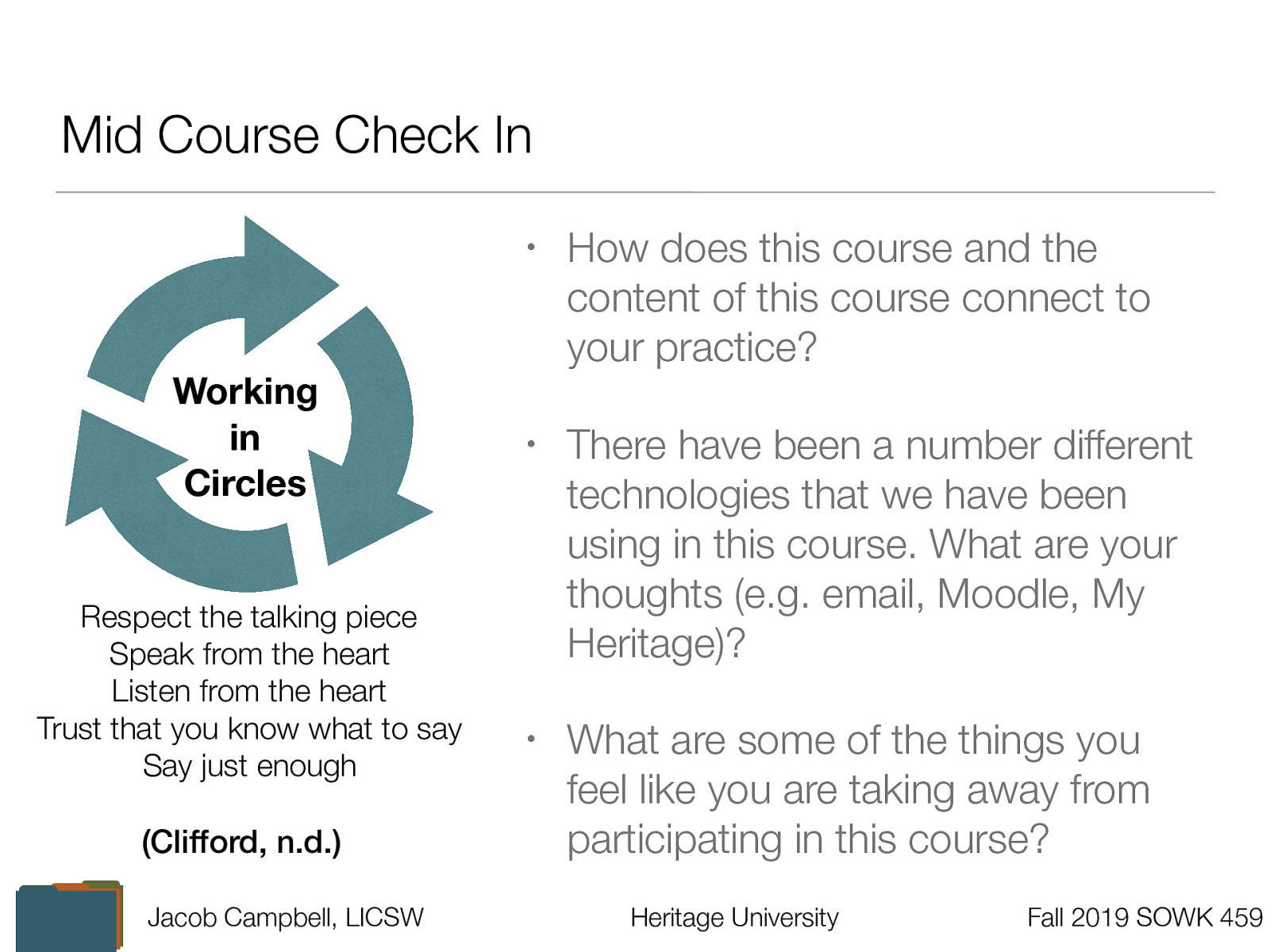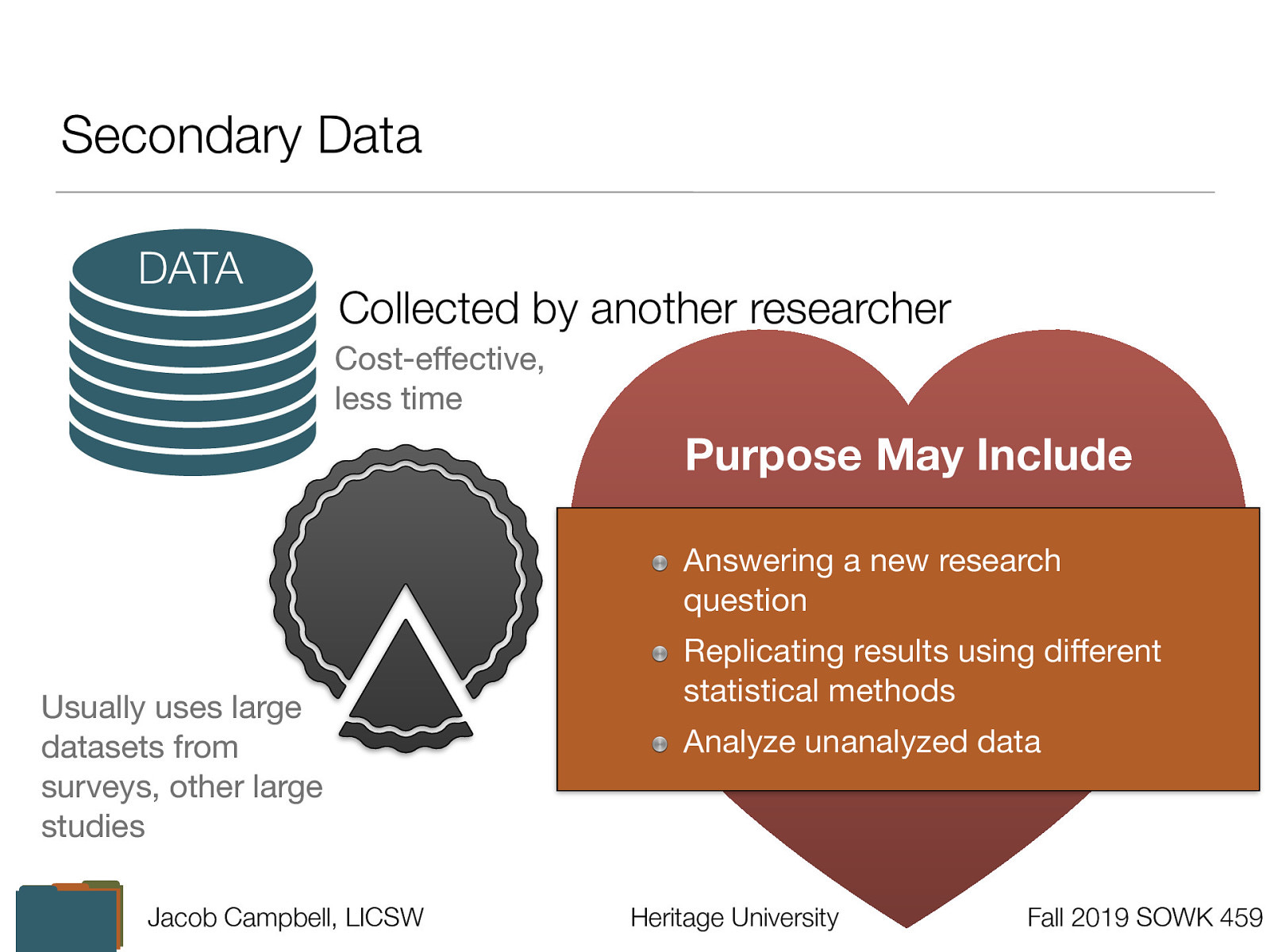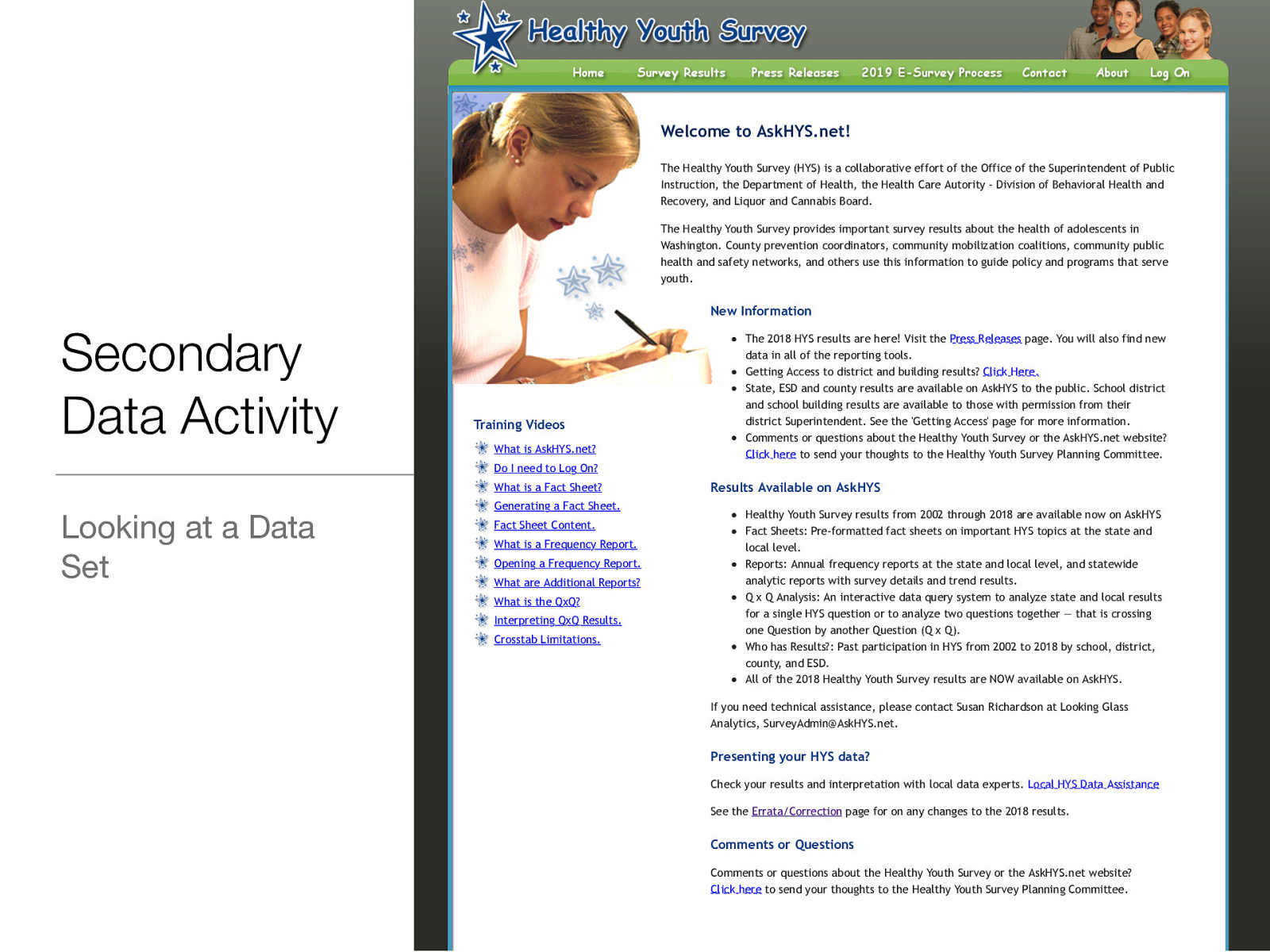SOWK 459 Week 08 - Organizing the Literature: Putting Everything in its Place
A presentation at Heritage University in October 2019 by Jacob Campbell and is tagged with Heritage University, BASW Program, SOWK 459w
Description
Agenda
- Unobtrusive Data Collection
- How we can apply research to our fields of practice
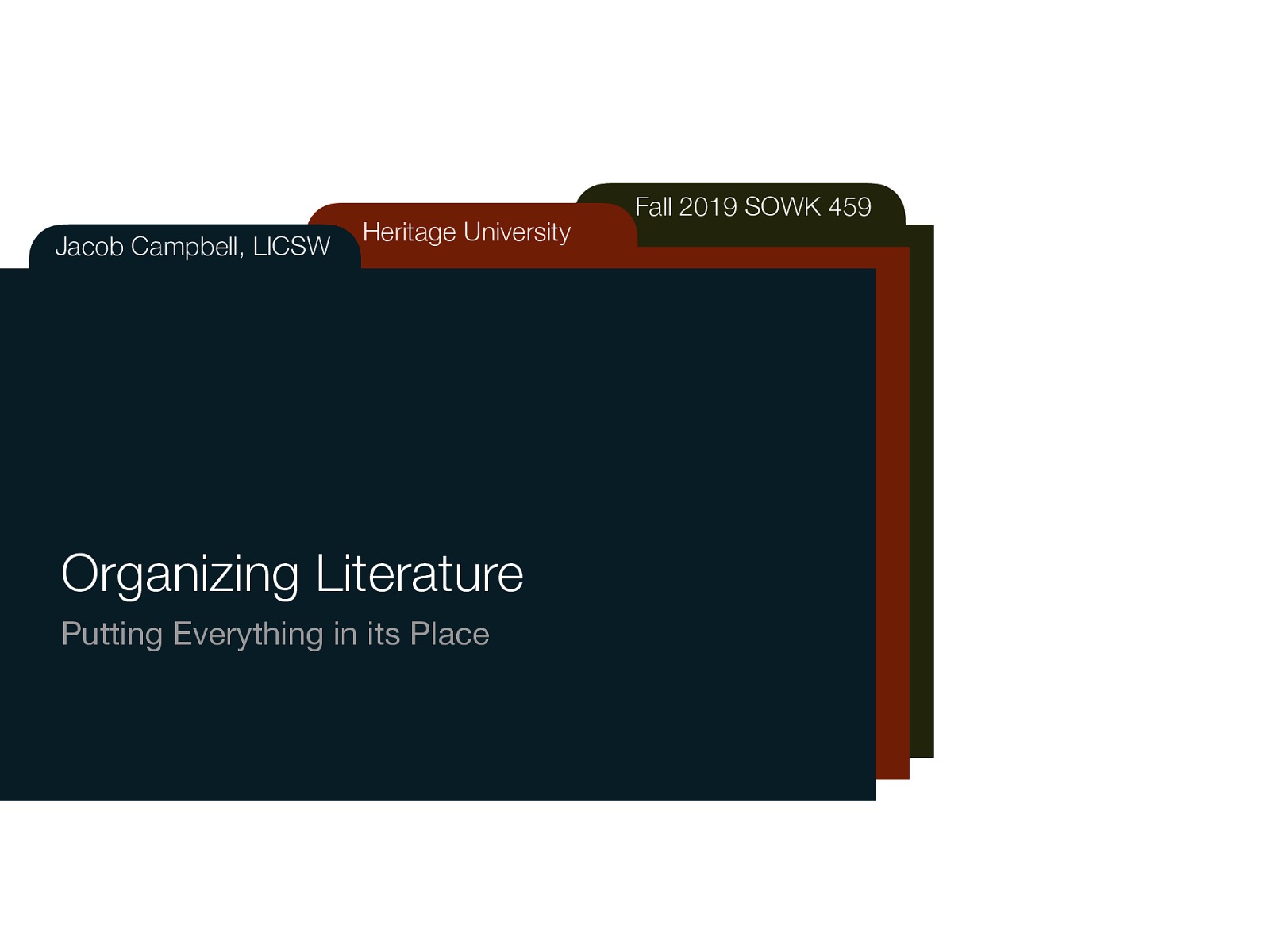
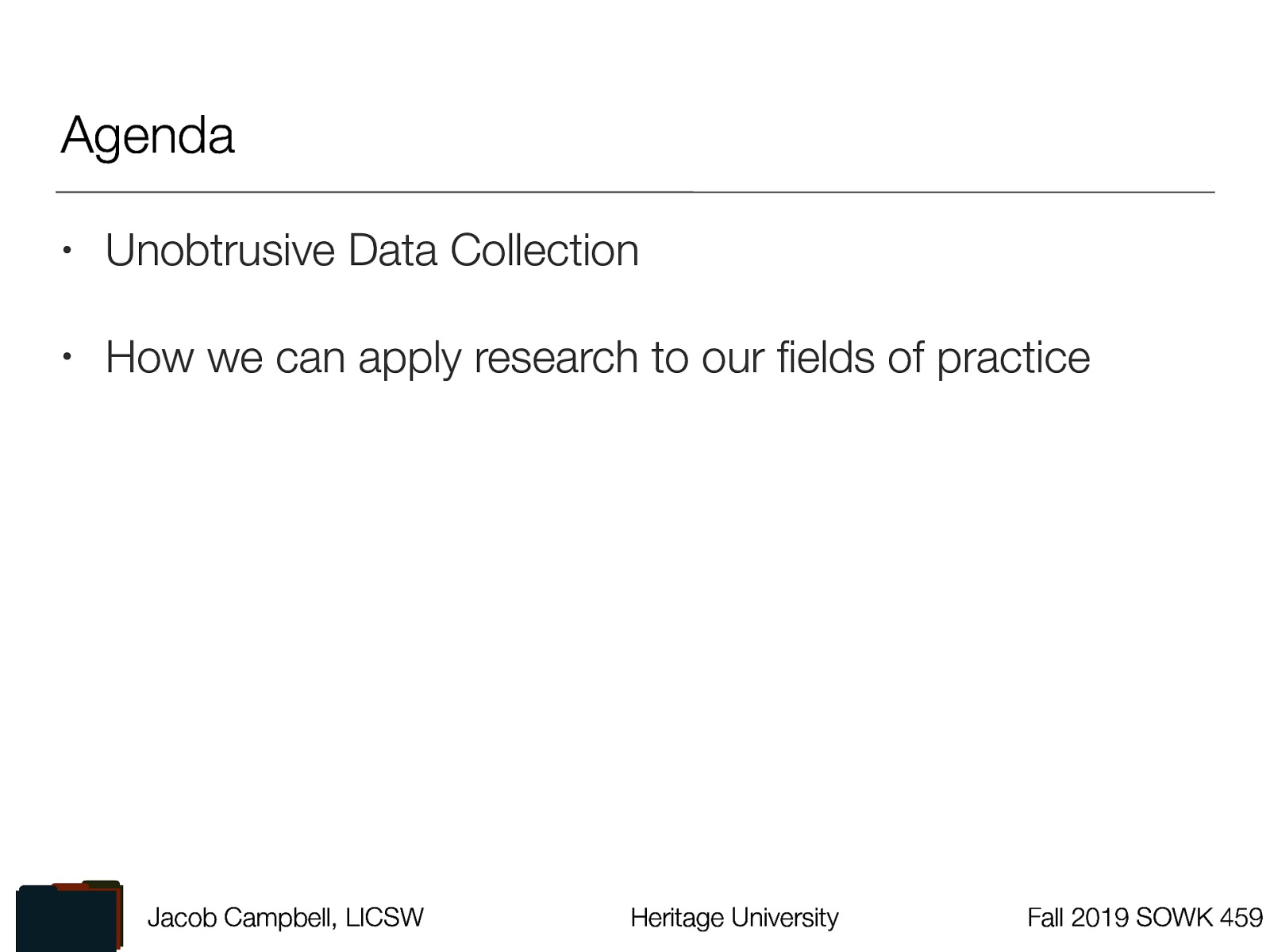
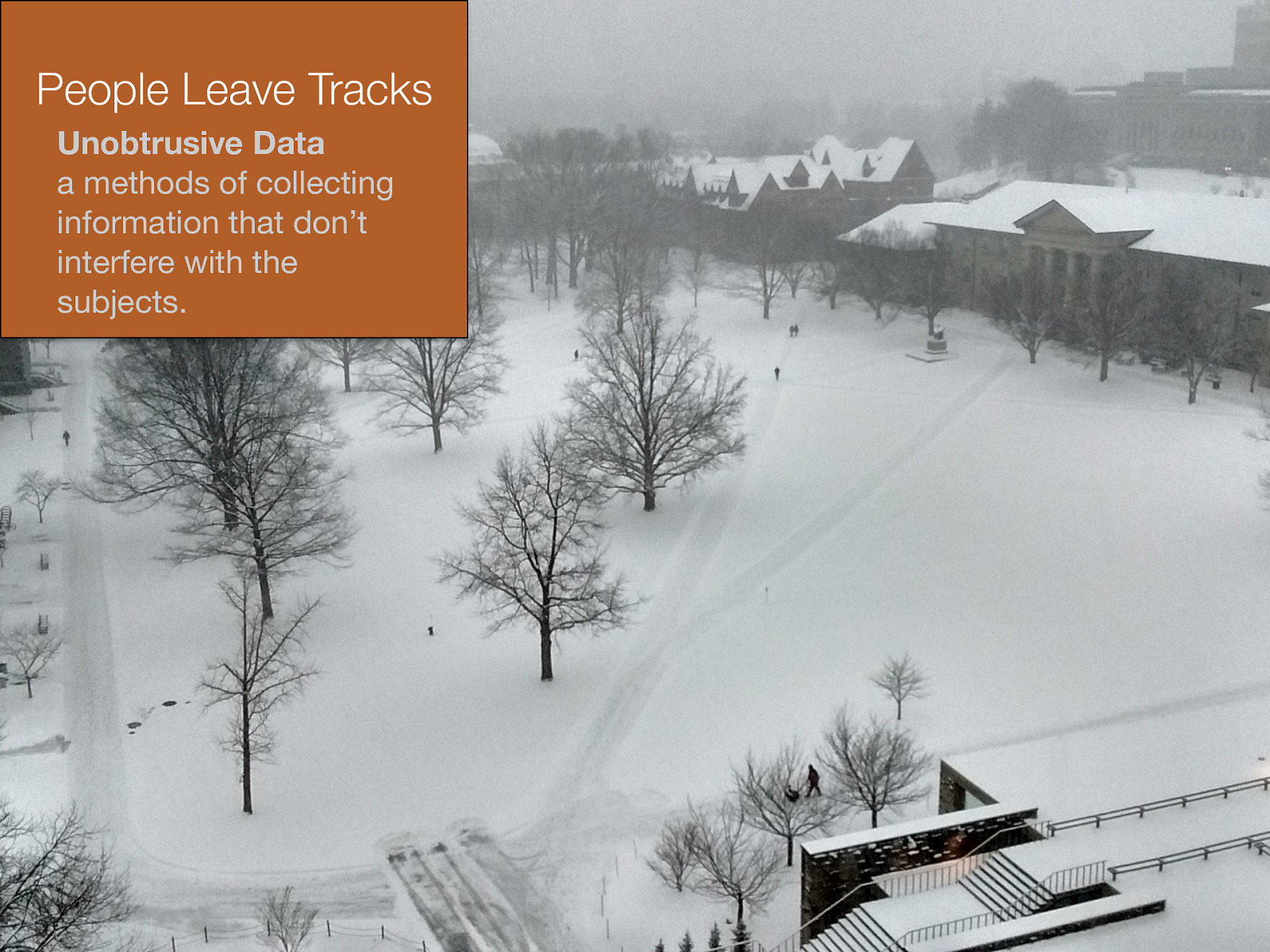
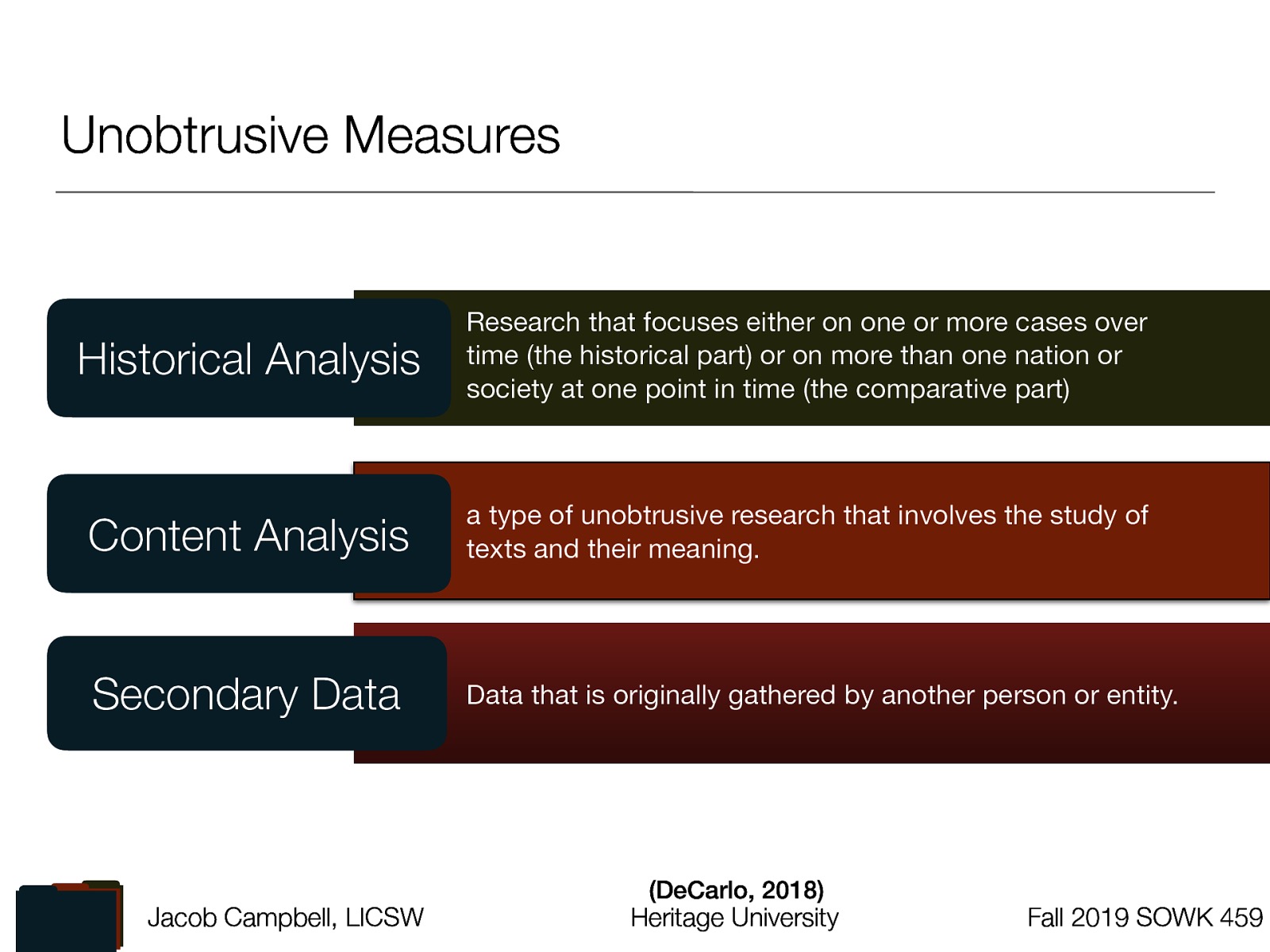
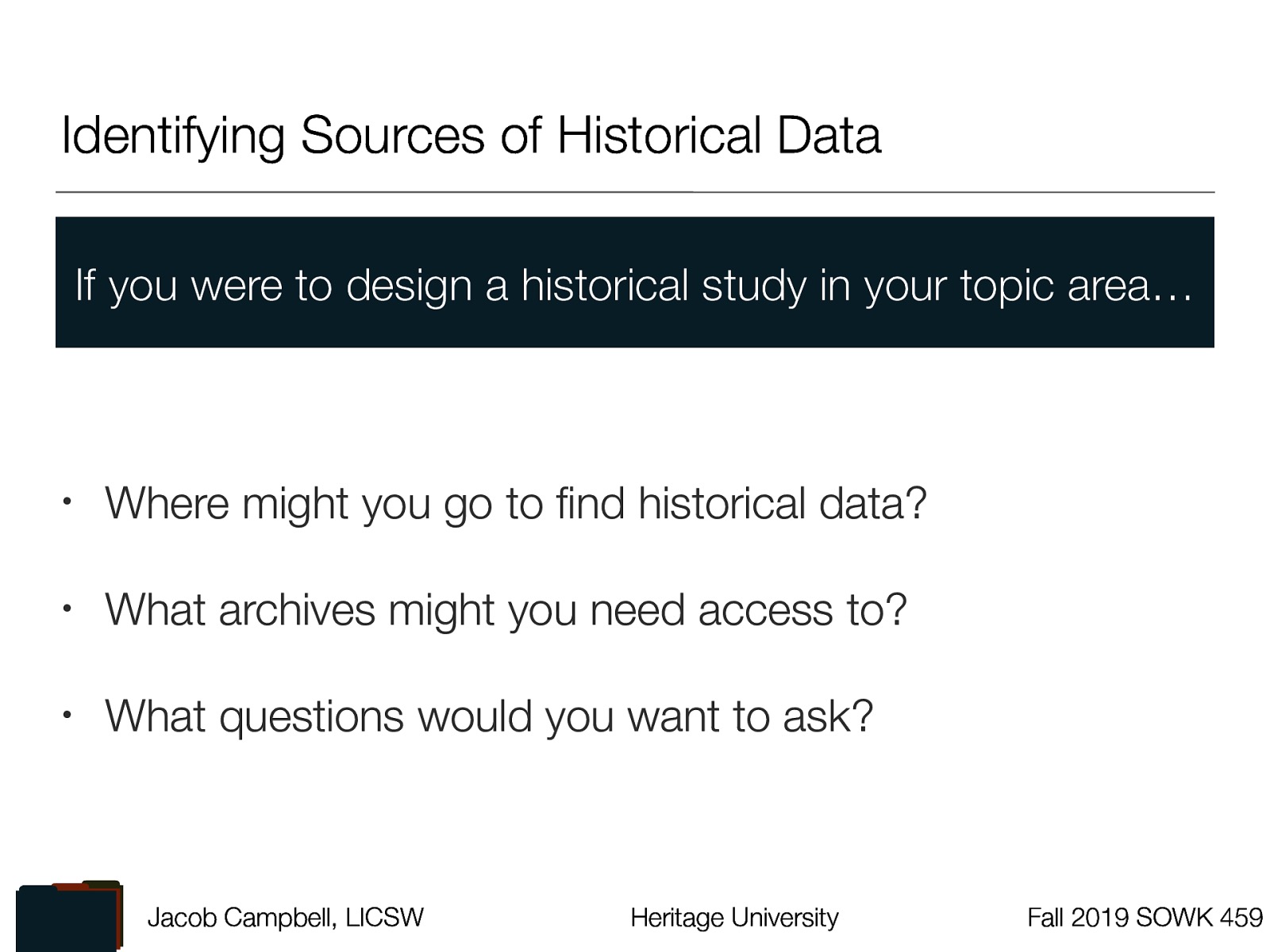
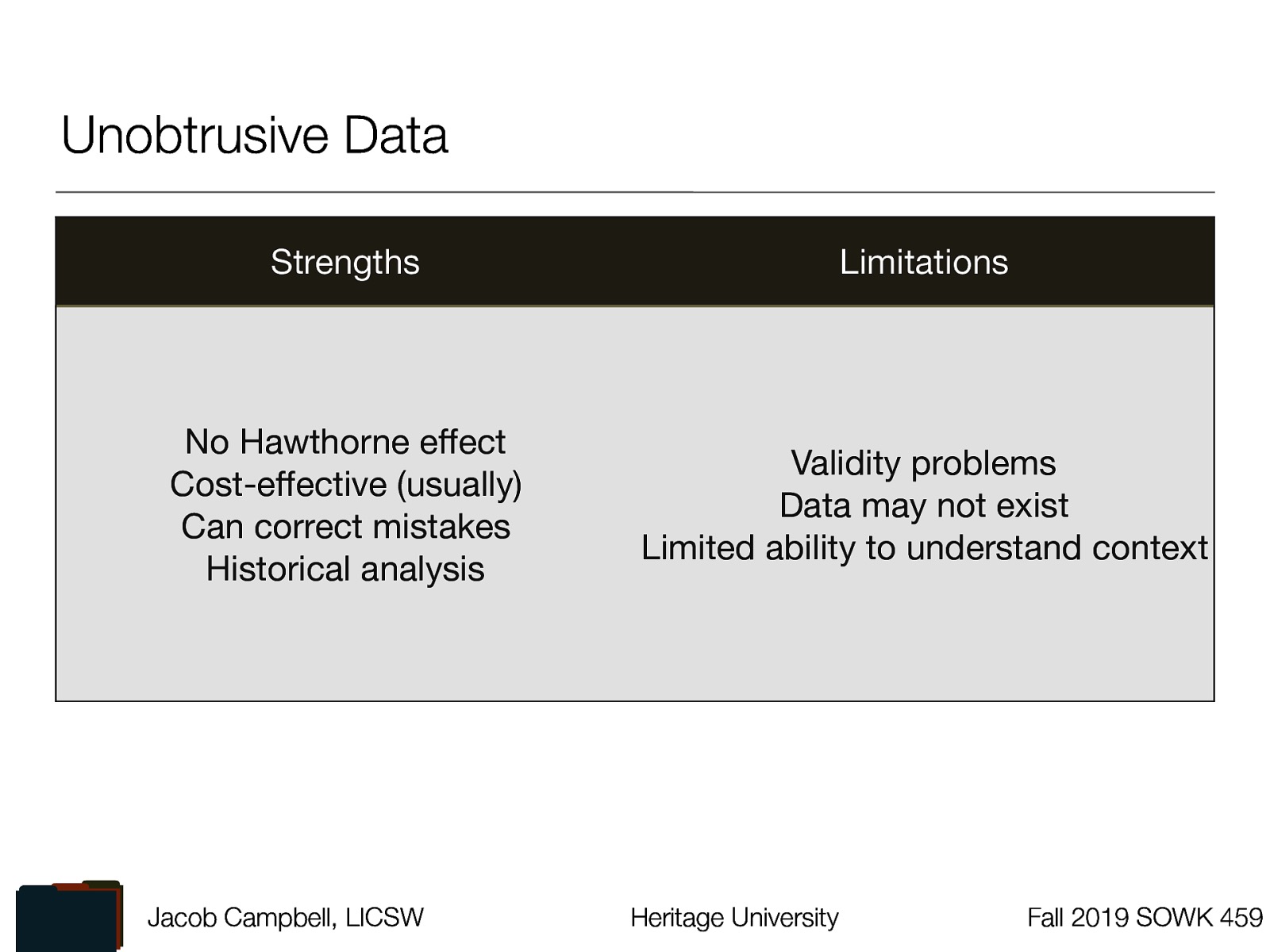
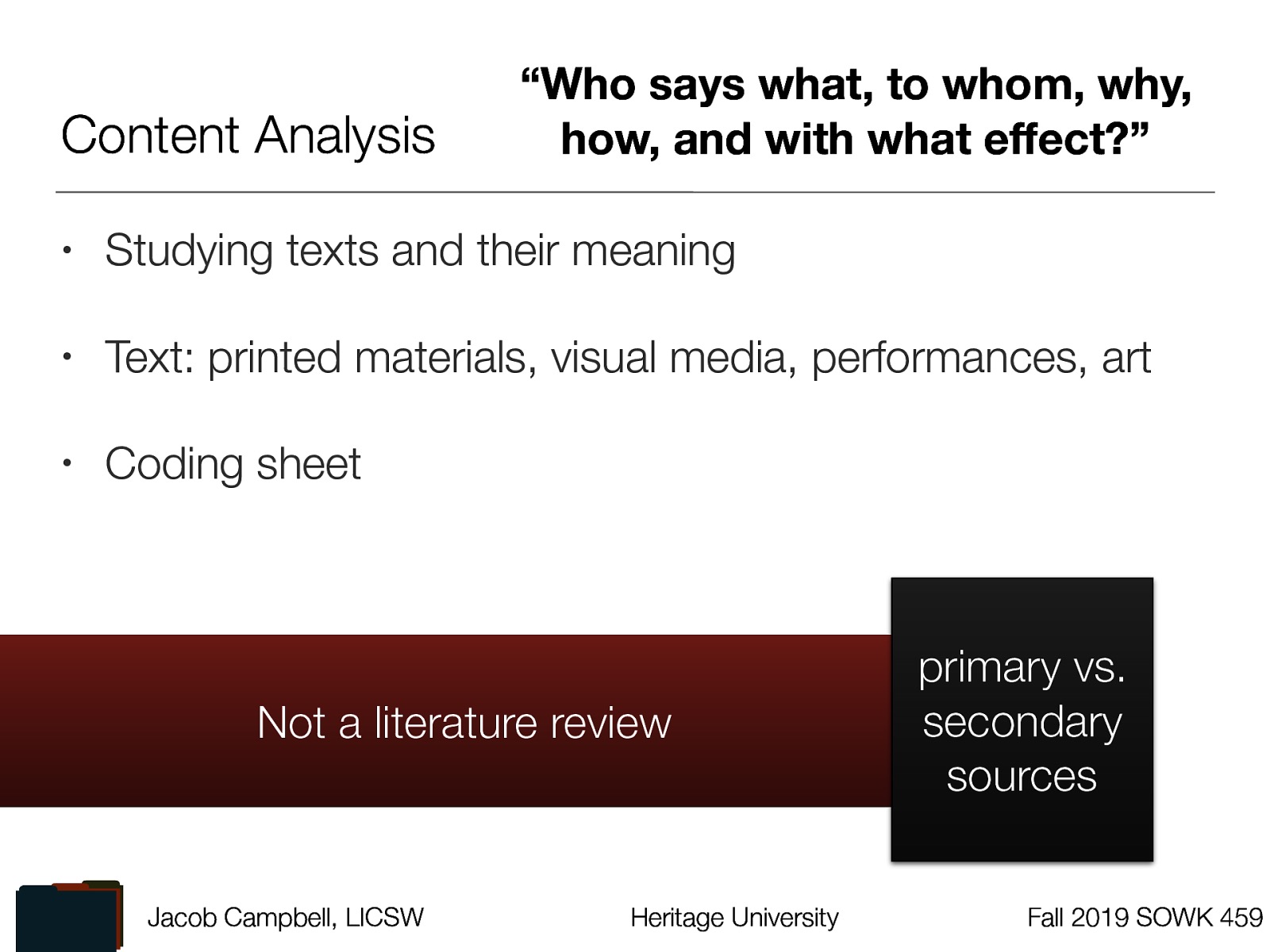
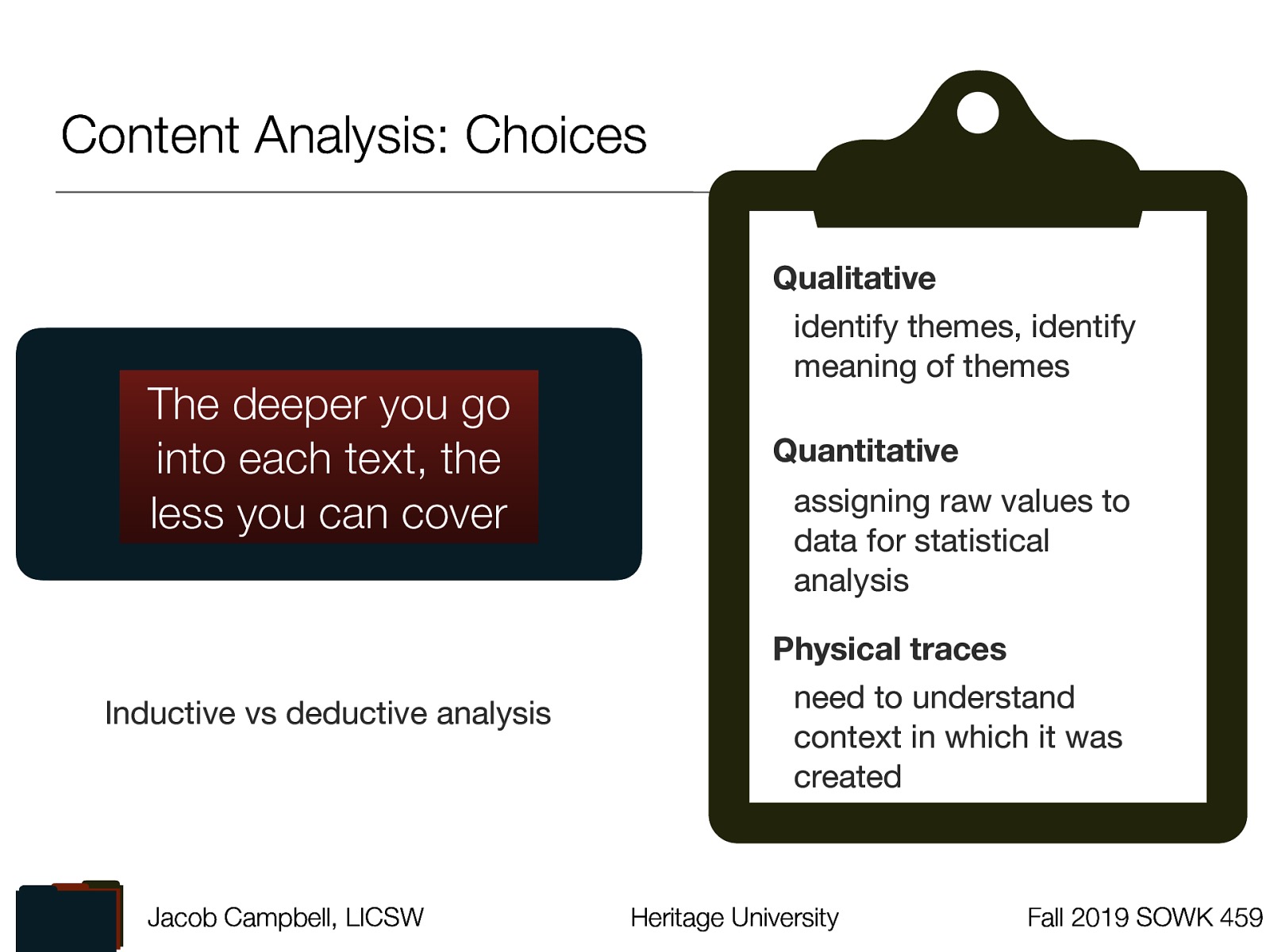
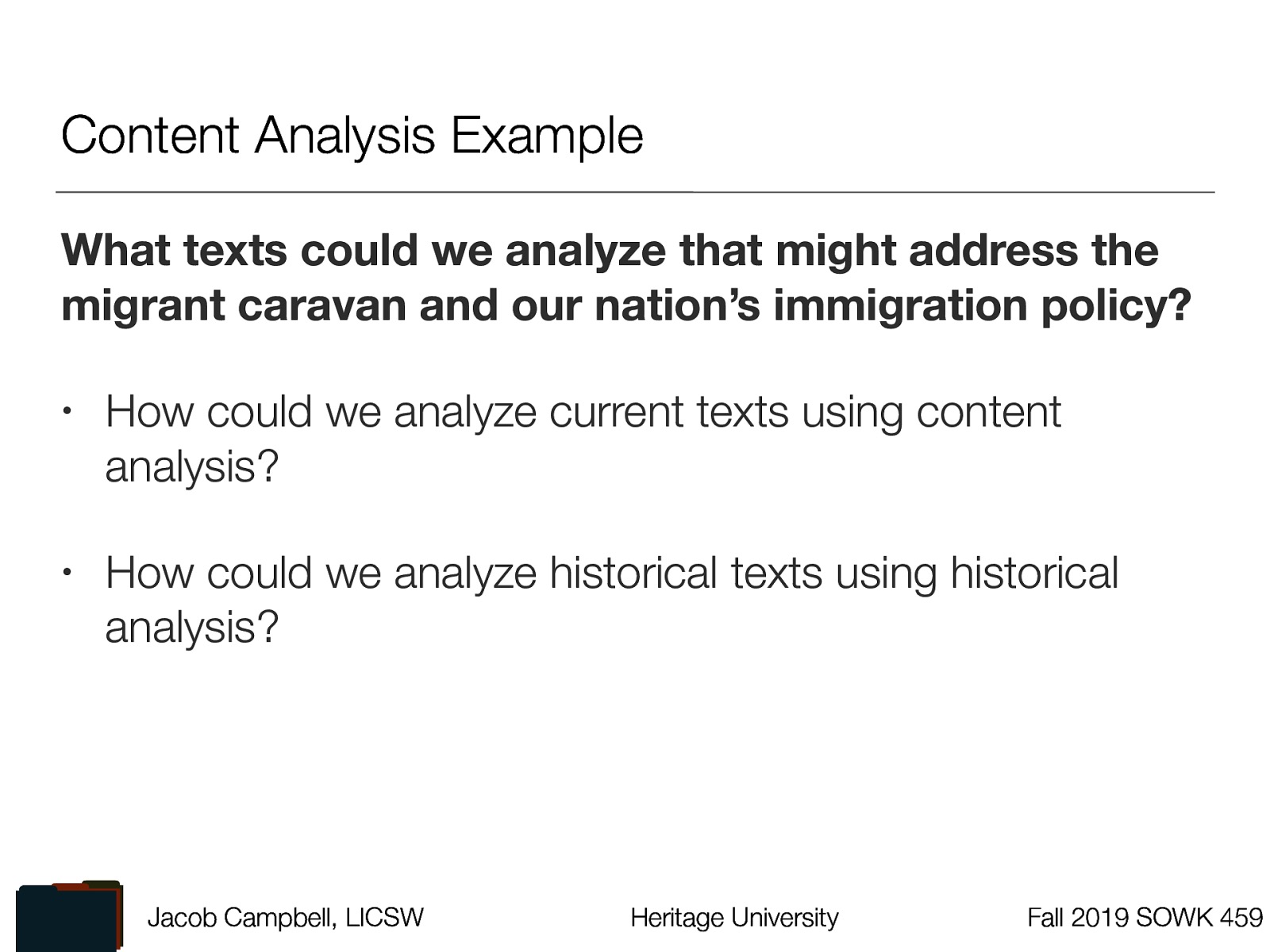
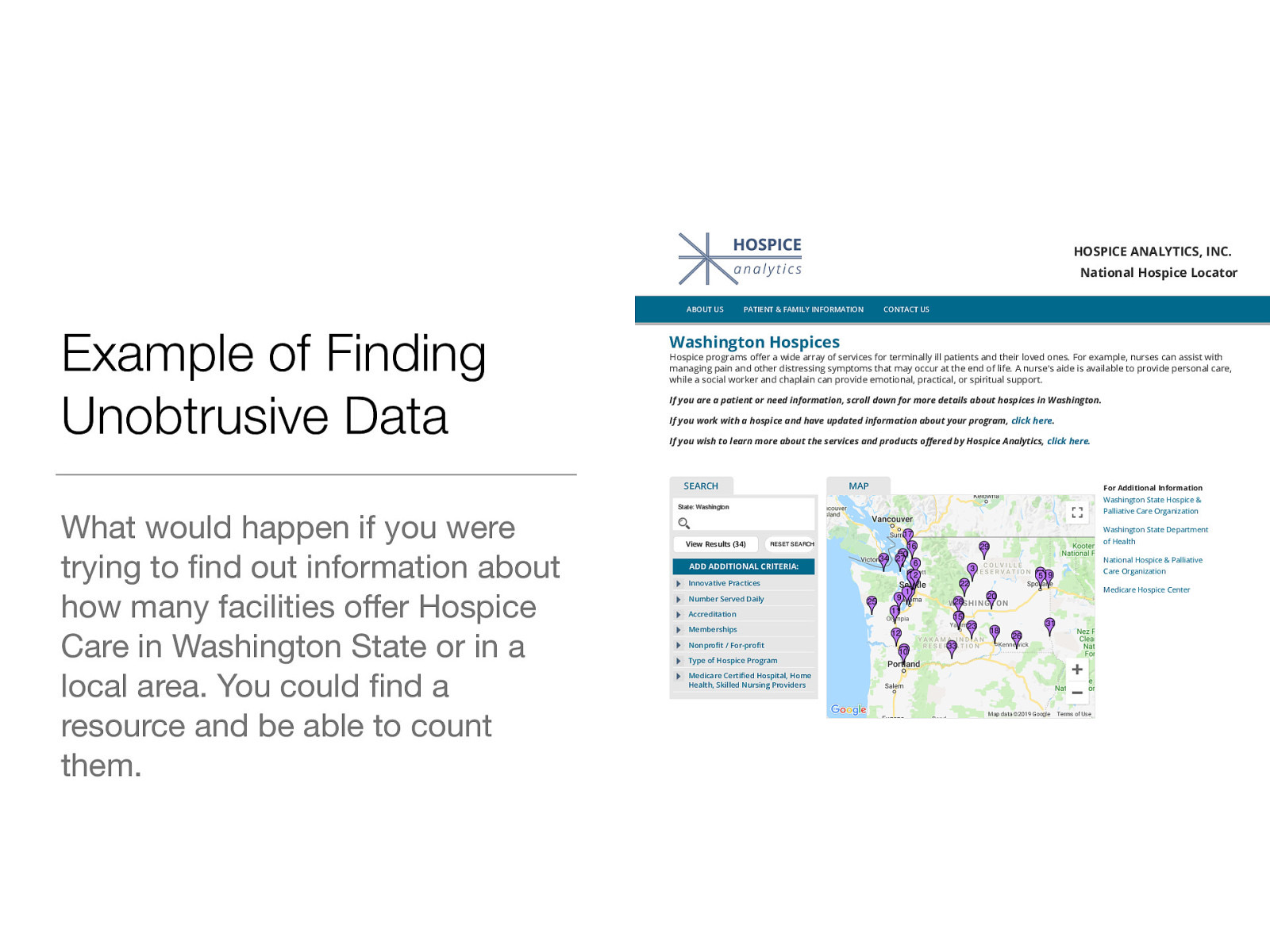
![[Whole Class Activity] Plan how we would collect data How could we evaluate this using unobtrusive measures](https://presentations.jacobrcampbell.com/toF2S3/deck-3886-large-10.jpeg)
